Origin and History
At the time of the Norman occupation, Belper was part of the land centred on Duffield held by the family of Henry de Ferrers.
The Domesday Survey records a manor of "Bradley" which is thought to have been somewhere in the vicinity of the Coppice. At that time it was probably within the Forest of East Derbyshire which covered the whole of the county east of the Derwent.
It was possibly appropriated by William de Ferrers, 4th Earl of Derby at some time after it was disafforested in 1225 and became part of Duffield Frith.
The town's name is often said to be a corruption of the name Beaurepaire (beautiful retreat), the name given to a hunting lodge, the first record being a charter of 1231. This would have been the property of Edmund Crouchback, 1st Earl of Lancaster who died in 1296, the record of his estate mentioning "a capital mansion".
There may have been Roman settlements in and around the river. Later, the Domesday Book speaks of a hamlet known as Bradley or Bradelei having "8.5 Households, 32 villagers, 8 smallholders, 10 slaves, 1 priest." The name is now reflected in the store De Bradelei Mills in Chapel Street.
From the 11th century the Ferrers family controlled the area from a massive Norman castle at Duffield and in the 13th century a Manor House and Chapel were built. By the 14th century there is a deer park within Duffield Frith with a hunting lodge and chapel.
The coal deposits of Derbyshire are frequently associated with ironstone and its availability together with charcoal and coal meant that Belper became a centre for nailmaking, from as early as the twelfth century.
In 1314-15 the Duchy of Lancaster recorded two forges producing iron bars for chapel windows, nails and spikes. Horseshoes and nails were supplied to huntsmen visiting the Royal Forest.
By the end of the eighteenth century there were around 500 nailer's workshops in the town. Nailmaking continued during the Industrial Revolution, but was eventually superceded by the cotton mills.
Industrial Revolution
At the beginning of the industrial revolution Belper's population was only around 500. A hundred years later in 1830 this figure had risen to around 8,000. The reason was the availability of work in the mills and good workers' housing.
The construction of Jedediah Strutt's mills brought many workers to Belper. By 1792 Belper had five mills and new rows of cottages to house the workers. The Strutt family also provided a chapel and schooling for their employees and child workers.
Belper was one of the first 'mill towns', as a progression of events in Derby and nearby Cromford. The industrialist Jedediah Strutt was initially a partner of Richard Arkwright and built a water-powered cotton mill at Cromford, followed by his own at Belper. In 1784 he built the North Mill, and across the road joined by a gangway, the West Mill.
In 1803 the North Mill was burnt down to be replaced by an innovative new structure designed to be fireproof. Other extensions followed, culminating in the East Mill in 1913, a present day Belper landmark. To this day the mill derives power from the river, using turbine-driven electrical generators.
The Strutt family were great benefactors of the town for some 150 years, providing for their workers employment, housing, education and even food from its model farms.
Much of the mill site was cleared in the 1960's. All that nowadays remains of Strutt's Mills is the large East Mill and the smaller North Mill, preserved as part of the Derwent Valley Mills heritage sites. The weir at Belper used to power four mill complexes. Even now it provides all the electricity for the North and East Mills.
Below the mill complex, the River Derwent is spanned by a fine stone bridge of 1795, replacing the old one washed away in a flood. The beautiful River Gardens offered boating on the river and brass band music at the bandstand.
In 1820 Belper was the first place in the UK to get gas lighting, at a works erected by the Strutts at Milford. Demand was such that in 1850, the Belper Gas and Coke Company was formed, with a works in Goods Road. The railway was built by George Stevenson in 1838 and was thought to be a marvel of engineering.
John Ward and George Brettle established a hosiery business which once employed hundreds of people. The George Brettle Warehouse, built in classical style in 1834, still survives in Chapel Street.
We are very grateful to Tricia Booth who has allowed us to use information from her excellent website in constructing our information. If you want to see more detail please go and have a look.
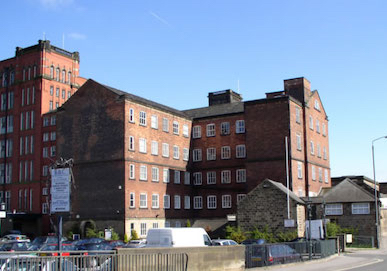
Strutt's North Mill
Discover
Belper North Mill, also known as Strutt's North Mill in Belper, is one of the Derwent Valley Mills, given UNESCO World Heritage Status in 2001
Strutt's North Mill played a vital role in the UK's Industrial Revolution and is of architectural and historic importance. It is one of a chain of mills that form part of UNESCO's Derwent Valley Mills World Heritage site.
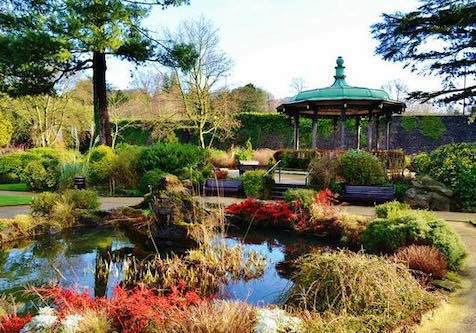
River Gardens
Discover
The River Gardens are often described as Amber Valley's 'Jewel in the Crown'. They are an attractive setting for events throughout the summer months
Located just next to Strutt's North Mill, these unique and easily accessible riverside gardens have been giving visitors a beautiful place to visit for over one hundred years.
There is a children's play area, a bandstand with performances throughout the year, and Swan rowing boats can be hired during the summer months to take a trip along nearly three miles of the river. For relaxation and hungry tummies there is the new Park Life Café at the Swiss Tea Rooms.
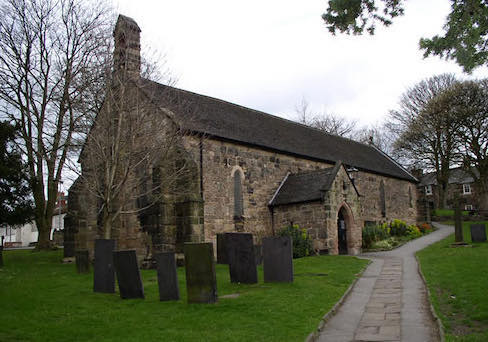
St John's Chapel
Discover
St John's Chapel dates from around 1250, it is one of the oldest buildings in Belper and is now the home of the Belper Heritage Centre
This small stone church, hidden away above the market place, dates from around 1250 and was built by William de Ferrers, Earl of Derby.
There is now also a Heritage Centre inside with a collection of old photographs of Belper and other memorabilia.
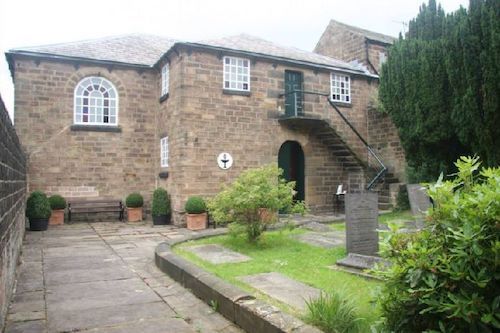
Unitarian Chapel
Discover
Hidden amongst the millworkers’ cottages on Field Row is Belper’s Unitarian Chapel
Jedediah Strutt had the original chapel built in 1788, and it remains today very much as it was when it was first built.
Underneath the tiered box-pews there is an arched catacomb where members of the Strutt family are interred.

Nailer's Workshop
Discover
On Joseph Street you can also see a former Nail Maker’s Workshop
This was an important industry in Belper before the cotton mills were established, with many workshops based around the old town. This building is a rare survival of this once important industry in Belper.
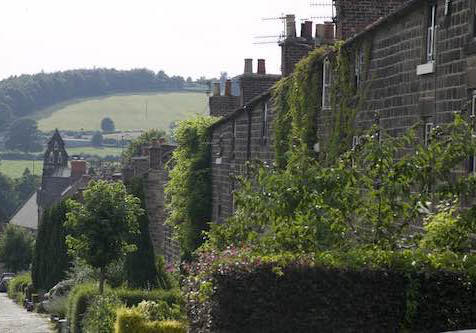
Long Row
Discover
Long Row contains perhaps the most impressive example of industrial housing built in the town
Take just a short walk from the North Mill towards Belper to view some of the historic millworkers’ cottages that are still in existence today. The beautiful and cobbled Long Row was built around 1790 to house the millworkers that the new Strutt Mills were attracting to the town and there are further streets named after the Strutt family.
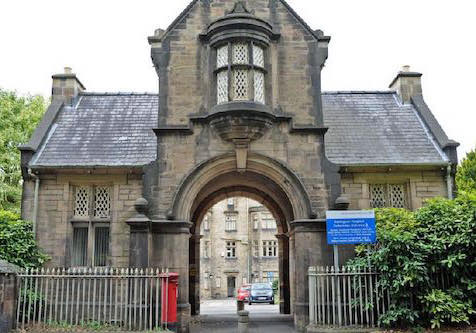
Babington Hospital
Discover
Belper's Old Workhouse. This fine old building was once a workhouse for the poor
George Benson Strutt of Belper sold two acres of land for £750 for the building of this former Workhouse. On completion in 1840 it had cost £8,700. Just how much is it worth today? Today it is a community hospital – although there are plans for the NHS to close it down, sell it off and this will make it a target for construction firms.
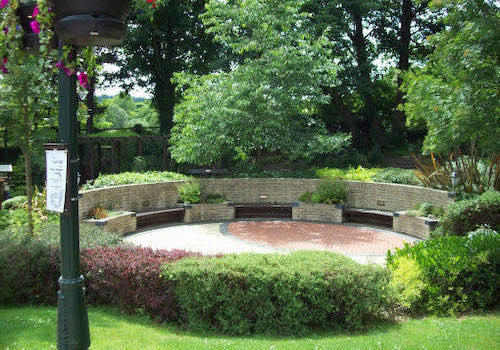
Beaurepaire Gardens
Discover
Not far from our iconic mill you will find the lost gardens of Belper
Just across the river's bridge from the North Mill is the former garden to the Cottage Hospital. It has been lovingly restored by the enthusiasm of a dedicated local Belper man, Peter Davies, and is now a peaceful spot to sit and relax.

Herbert Strutt School
Discover
The school was built 1907–09, commissioned by George Herbert Strutt
Herbert Strutt, was given the go-ahead to provide a school for the town in March 1907,and the site he chose for the new school was opposite the town‘s workhouse, Babington House.
The school closed in 2007 and is now a community venue run by the Strutt’s Society.




